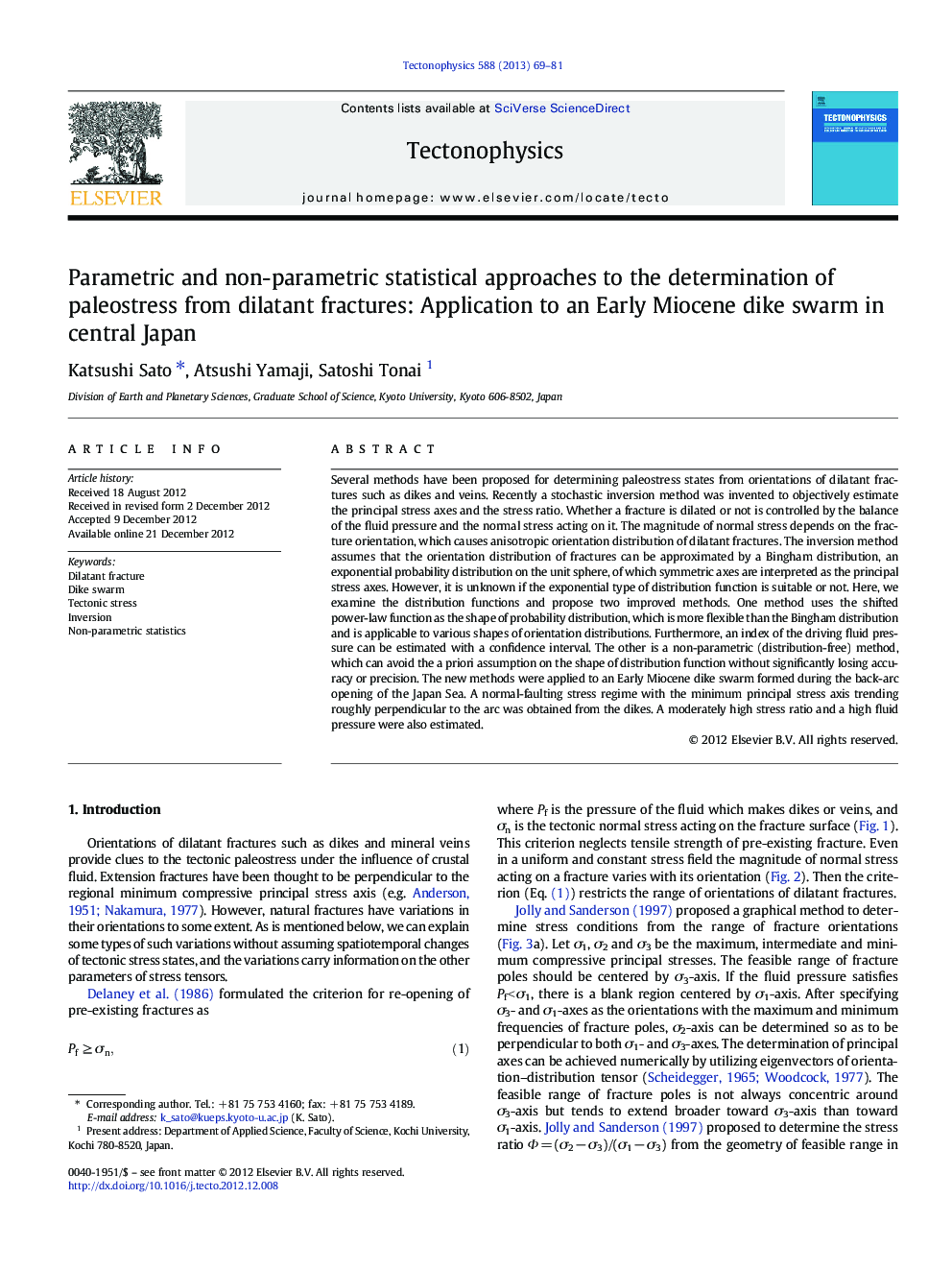| Article ID | Journal | Published Year | Pages | File Type |
|---|---|---|---|---|
| 4692546 | Tectonophysics | 2013 | 13 Pages |
Several methods have been proposed for determining paleostress states from orientations of dilatant fractures such as dikes and veins. Recently a stochastic inversion method was invented to objectively estimate the principal stress axes and the stress ratio. Whether a fracture is dilated or not is controlled by the balance of the fluid pressure and the normal stress acting on it. The magnitude of normal stress depends on the fracture orientation, which causes anisotropic orientation distribution of dilatant fractures. The inversion method assumes that the orientation distribution of fractures can be approximated by a Bingham distribution, an exponential probability distribution on the unit sphere, of which symmetric axes are interpreted as the principal stress axes. However, it is unknown if the exponential type of distribution function is suitable or not. Here, we examine the distribution functions and propose two improved methods. One method uses the shifted power-law function as the shape of probability distribution, which is more flexible than the Bingham distribution and is applicable to various shapes of orientation distributions. Furthermore, an index of the driving fluid pressure can be estimated with a confidence interval. The other is a non-parametric (distribution-free) method, which can avoid the a priori assumption on the shape of distribution function without significantly losing accuracy or precision. The new methods were applied to an Early Miocene dike swarm formed during the back-arc opening of the Japan Sea. A normal-faulting stress regime with the minimum principal stress axis trending roughly perpendicular to the arc was obtained from the dikes. A moderately high stress ratio and a high fluid pressure were also estimated.
► Two improved methods of stress inversion from dilatant fractures are proposed. ► A new parametric method uses a flexible stochastic model. ► The other new method is non-parametric without a priori assumption on the model. ► The methods are tested through the analyses of Miocene dikes formed during the rifting of Japan Sea. ► An extensional stress regime and a high fluid pressure were estimated.
